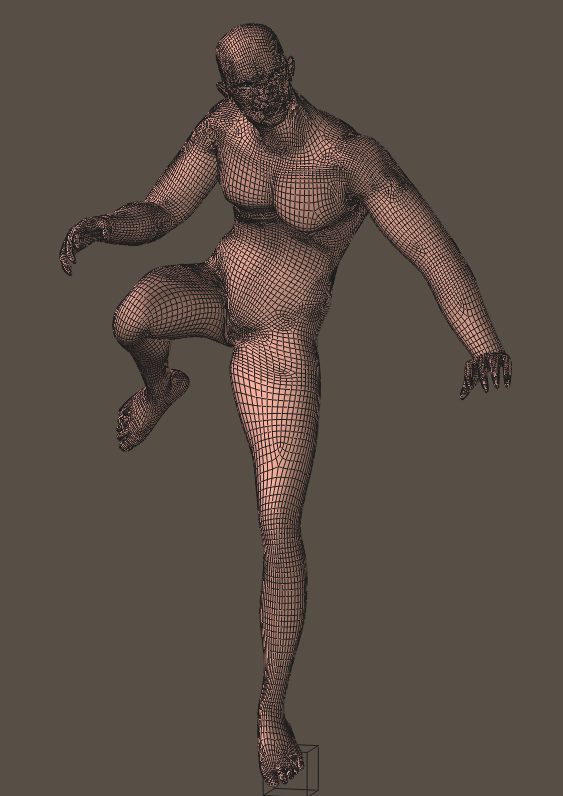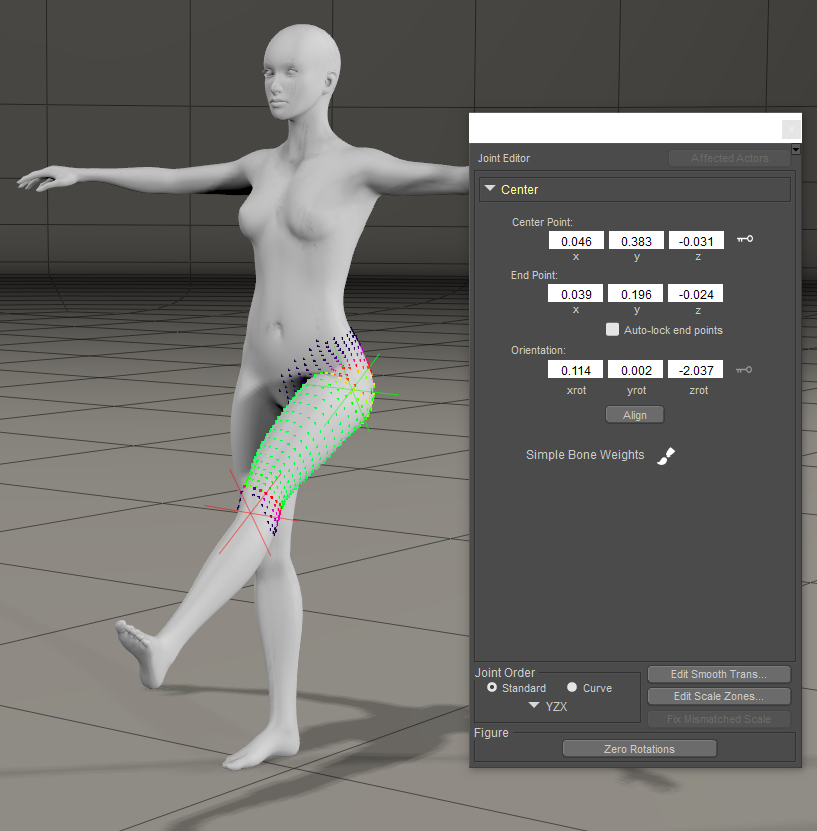Skinning Methods
The Figure > Skinning Method commands determine how Poser treats a character mesh in regards to grouping:
Choose Figure > Skinning Method > Poser Traditional if you want to display or create a figure that uses Poser’s traditional model of breaking the mesh into individual body parts.
Choose Figure > Skinning Method > Poser Unimesh if you want your model to be used with subdivision surfaces (see Working with Subdivision Surfaces).Poser Unimeshes can still be posed manually or with preset poses that are saved to the Library. The mesh is unified, but body part groups are still recognized in Poser.

The Poser 2 Male (roughly 2500 polygons) converted to Poser Unimesh and subdivided to level 2.
Choose Figure > Skinning Method > Simple Bones Single Skin - Interoperable ... if you want to work on or create a figure that has a single skin mesh, but in which the Poser grouping is removed. Figure setup is very simple in this mode. You can specify joint origins and one vertex weight map. After you convert the model to Simple Bones Single Skin, test each joint and use the Simple Bone Weights painting mode to correct any problem areas.
Traditionally-rigged Poser figures use a mesh that is broken into body parts, and has spherical or capsule-shaped zones of influence and weight maps. To export these types of figures from Poser to COLLADA, you should switch to Simple Bones Single Skin - Interoperable first. That way, you can preview how the figure bends in other applications. If you are not satisfied, you can touch up the weights at that point.

La Femme converted to Simple Bones Single Skin.
In Poser 12, choose Figure > Skinning Method > Regenerate Simple Bones Single Skin Weights if you want to start over with a new simple bones single skin mesh.